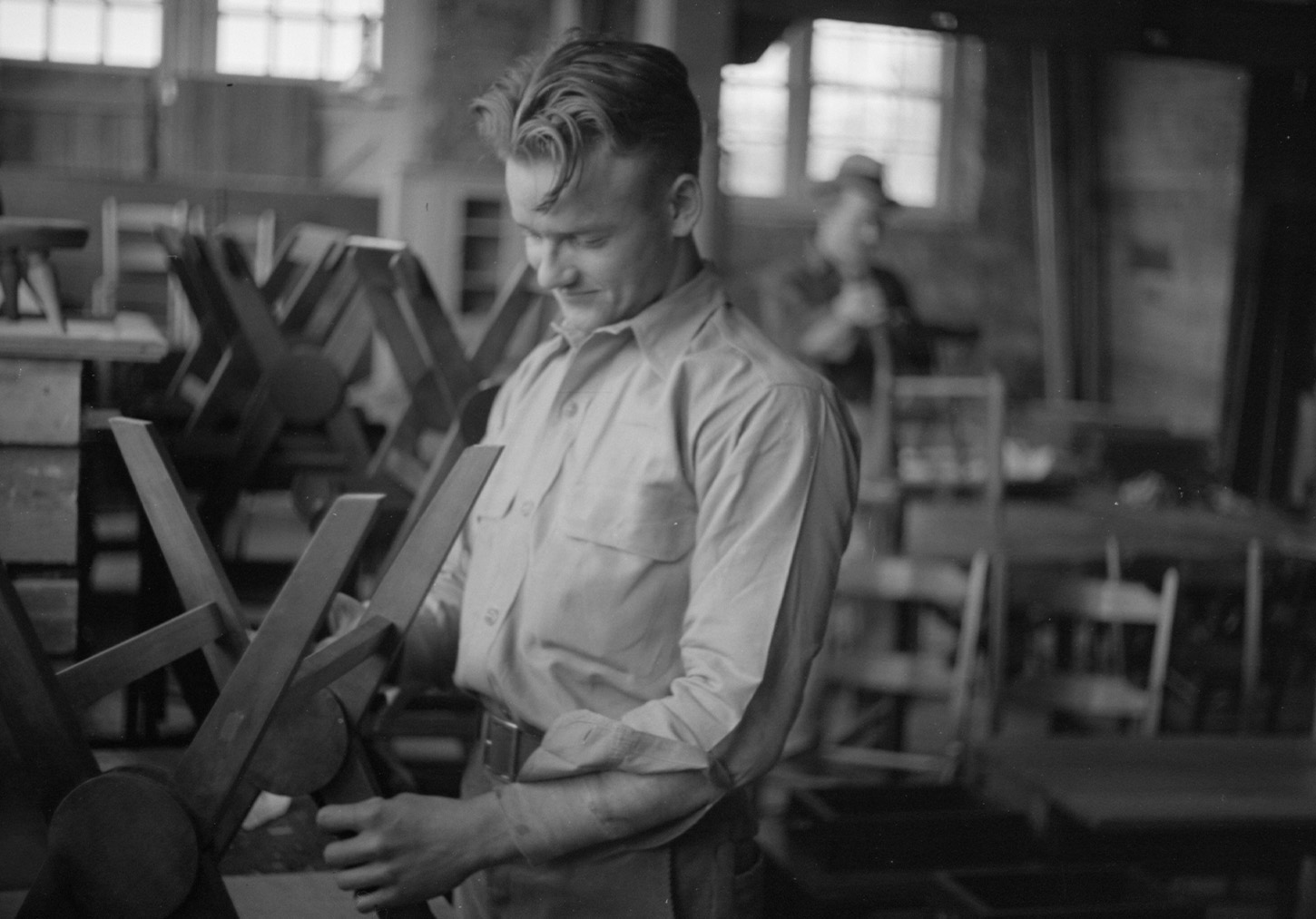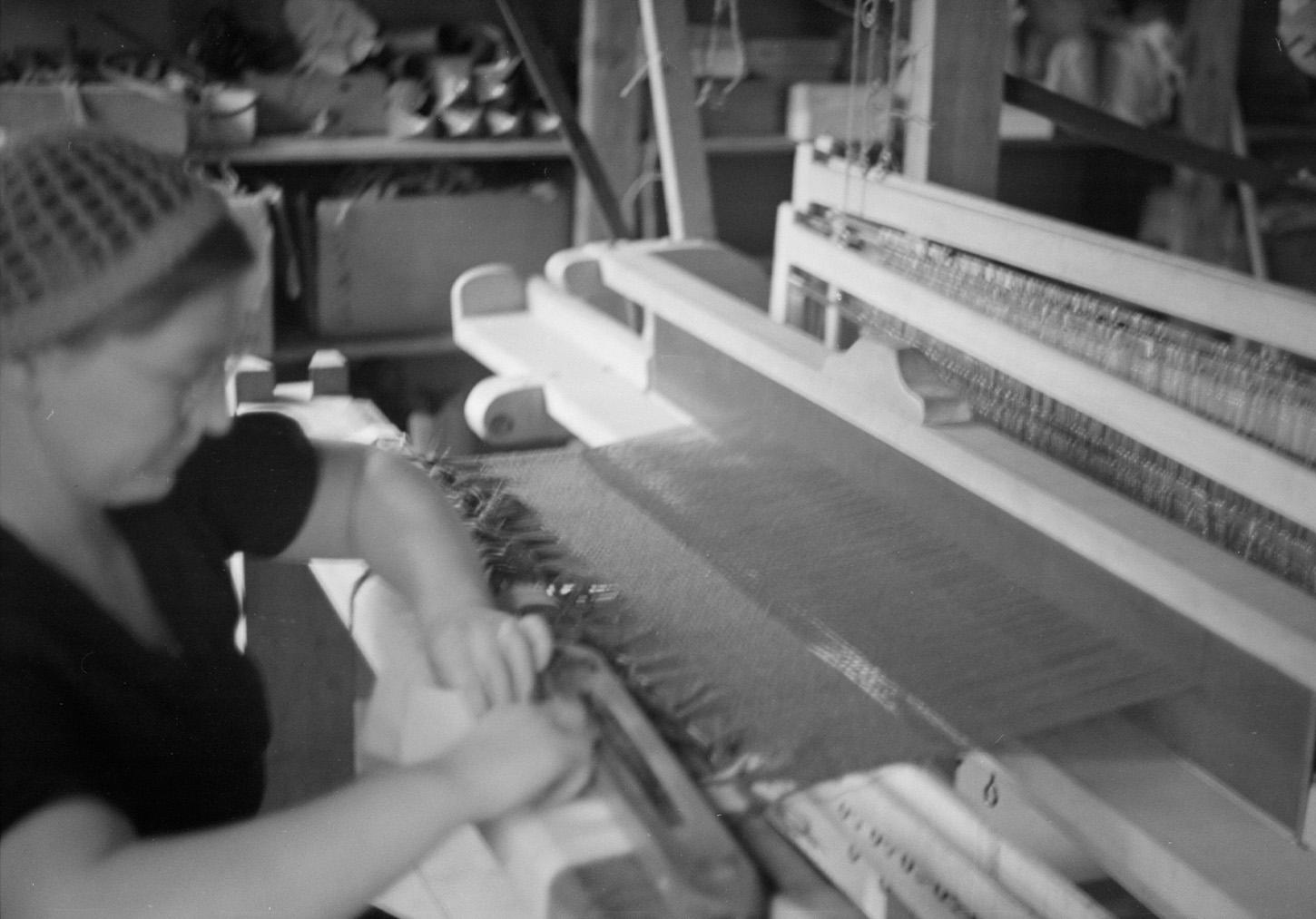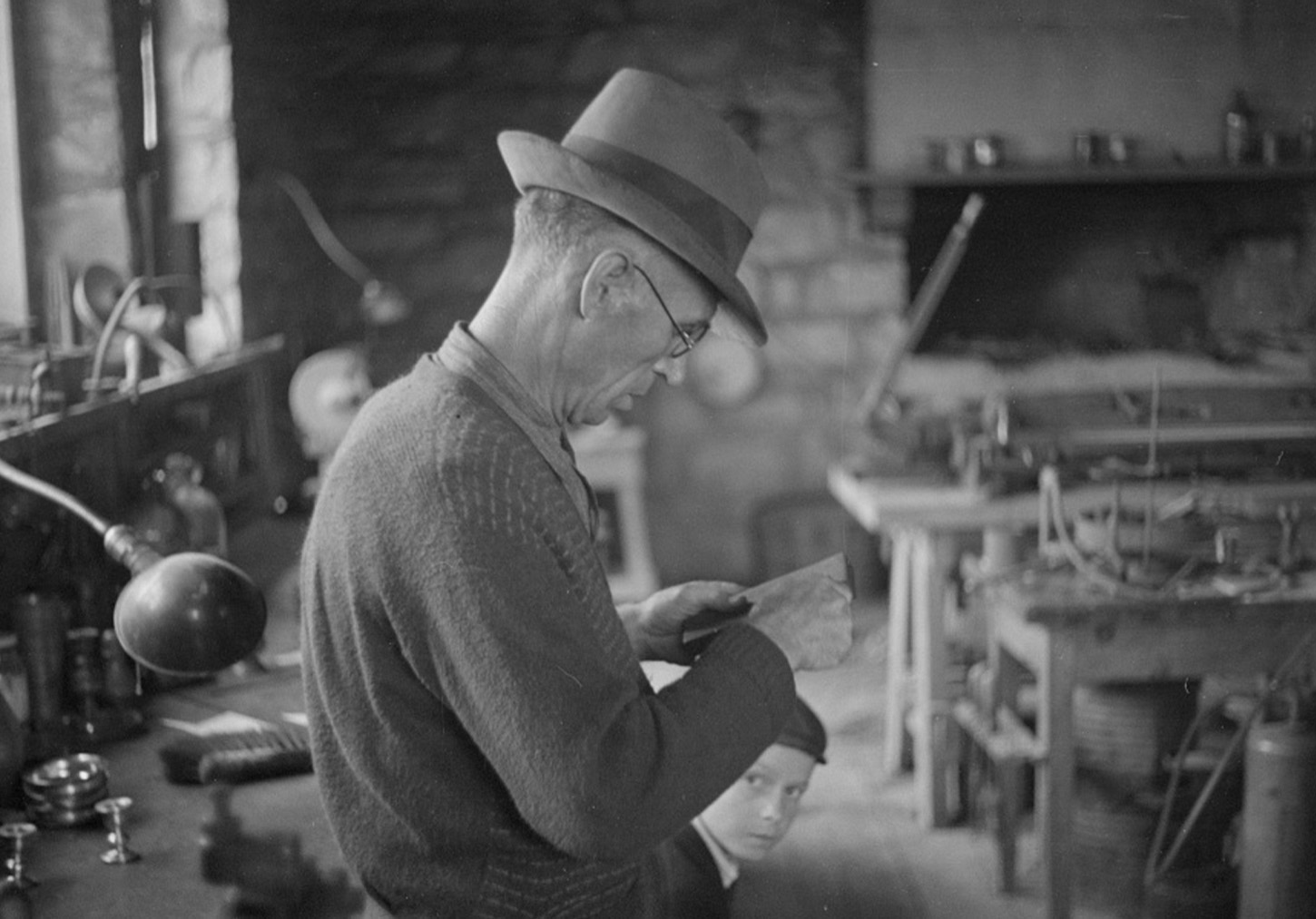The Mountaineer Craftsmen’s Cooperative Association (MCCA) was formed in 1931 by members of the American Friends Service Committee in the coal camps around Morgantown, WV. Its goal was to help the unemployed by teaching them handicraft trades as a way to make money. An Arthurdale branch opened in 1934 and soon became the main outlet. The crafts produced were wooden items, forged metalwork, and hand-woven textiles.
On October 22, 1935, the homesteaders in Arthurdale chartered the Arthurdale Association, a non-share corporation and branch of the MCCA operating in Scotts Run. The association eventually took out loans for several cooperative ventures in Arthurdale including a store, farm, inn, barbershop, industrial factory, service station, and a dairy and poultry operation.
Unfortunately, all of these cooperative businesses lost money for the association. Historian Steven Haid stated that the cooperatives “were poorly conceived, poorly managed, and…poorly operated.” Although financially unsuccessful, the cooperatives did provide employment to the homesteaders at a time when it was most needed, as well as skills they used even after the craft industry halted operations.
FURNITURE & WOOD WORKING
The most successful of the craft ventures was furniture making. In addition to the simple Colonial style furniture which was used throughout Arthurdale, the factory produced 7 lines of more decorative styles which could be ordered. Both furniture stores and private customers could shop in Arthurdale or through catalogs. Several pieces can be found in Eleanor Roosevelt’s Val-Kill Cottage.
Samuel Godlove was brought to Arthurdale to teach the woodworkers how to make his family’s famous Godlove chairs which had woven seats and were very study and in major demand. They also produced many smaller household items like trays, spoons, lazy susans, and platters.
SPINNING & WEAVING
In 1934, with five looms from Scotts Run and nine additional looms purchased by Eleanor Roosevelt, the spinning and weaving cooperative in Arthurdale began. Mrs. Roosevelt also paid for teachers from Berea College in Kentucky to teach interested women to weave. The cooperative produced rag rugs, coverlets, aprons, pillow tops, tablecloths, draperies, bedspreads, and clothes out of linen, cotton, and wool. Most of these items were sold commercially through the Craft Shop, but the cooperative also filled orders from all over the United States and other countries. The women also quilted blankets and donated them to the Health Center and Nursery School.
The community interest in weaving was so high that a course was offered at the high school for junior and senior girls. In 1939, Eleanor Roosevelt generously paid for Arthurdale High School graduate Dorothy Mayor to study weaving in Louisville, KY with master weaver Lou Tate for 18 months. Some homestead husbands built their wives looms for them to use at home, while other women and girls continued to come up to the Center to use those looms.
METALWORKING
The Forge, still located in the center complex, enabled blacksmiths to work with wrought iron, copper, and pewter. The smiths produced locks, door handles, hinges, and fixtures for the homes and barns as they were built. They also made copper and tin light reflectors for the homes and buildings. They produced a line of Colonial reproduction pewter goods, decorative copper items, and traditional wrought iron wares like fireplace tools and wall hooks. These were sold through the Craft Shop and in catalogs.
Arthurdale blacksmiths soon received a national reputation for the products they made. According to a 1940 Mountaineer Craftsmen’s Cooperative Association catalog, the pewter knives, candlesticks, bowls, and plates made in Arthurdale had a "true antique finish [with the] charm of early American simplicity" and sold from 25 cents to $7 a piece. The American Federation of Arts even selected the MCCA pewter candlesticks for display at the 1937 Paris Exhibition to represent American craftsmanship.
DONATE TODAY!
Arthurdale Heritage needs your help! With your support, we can continue to provide valuable community and educational efforts. We sincerely appreciate any assistance you can provide.













